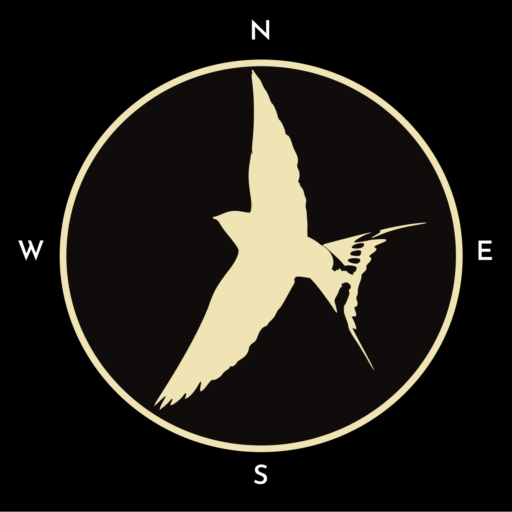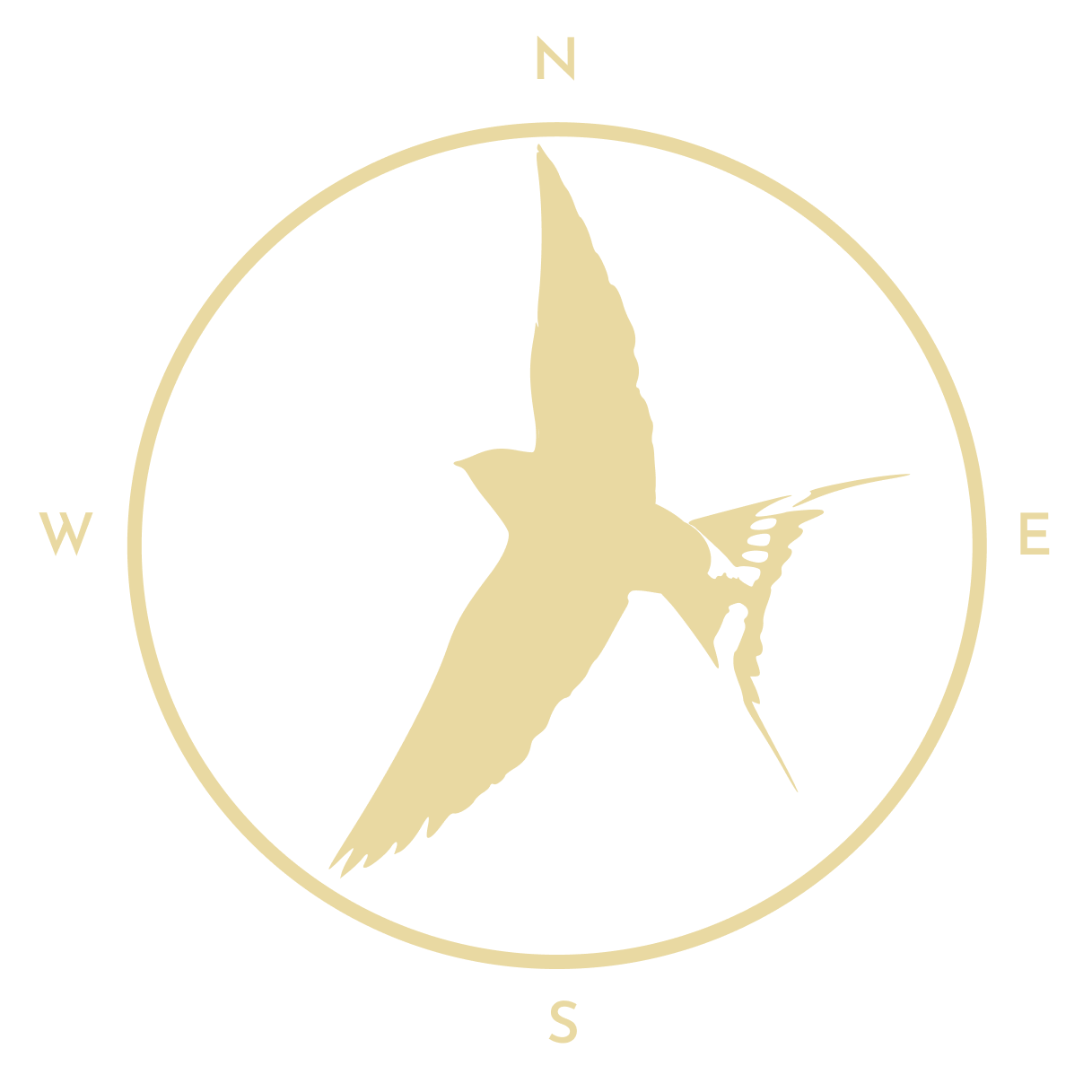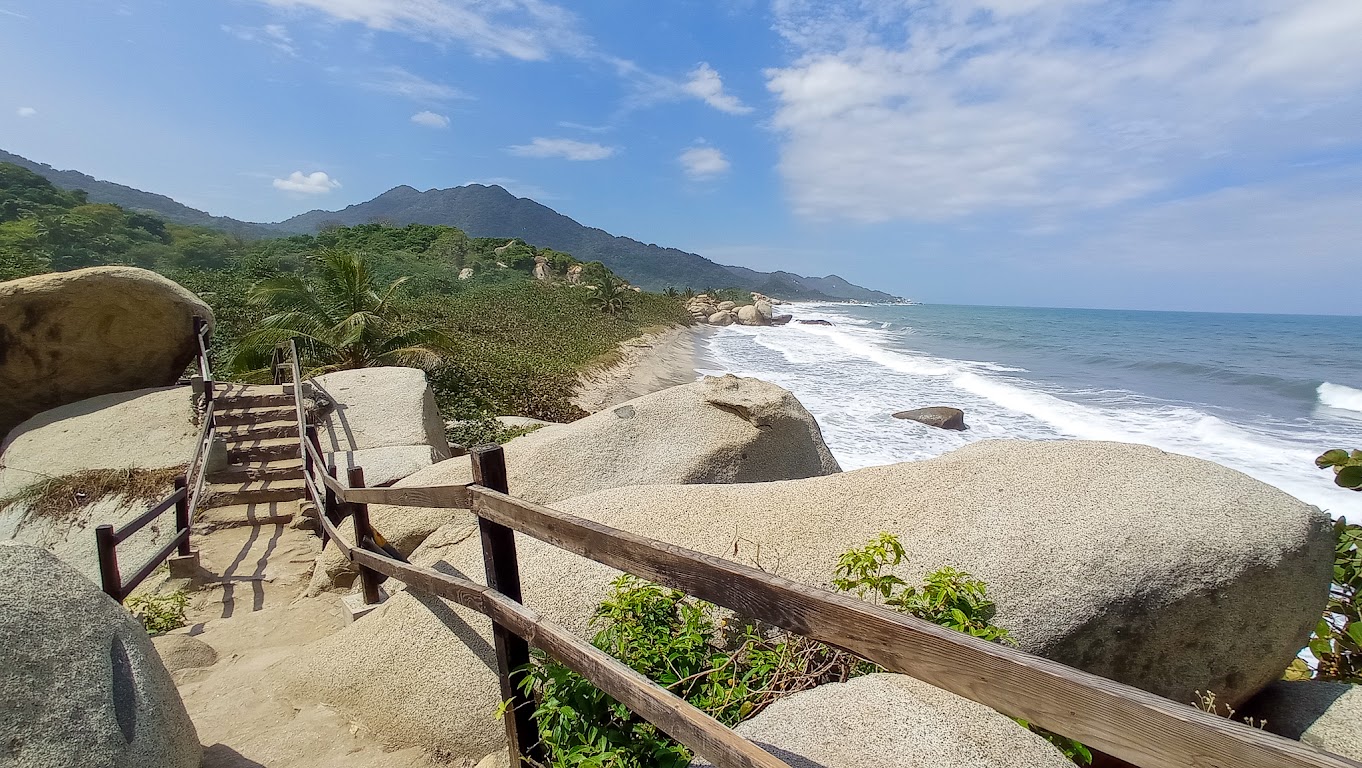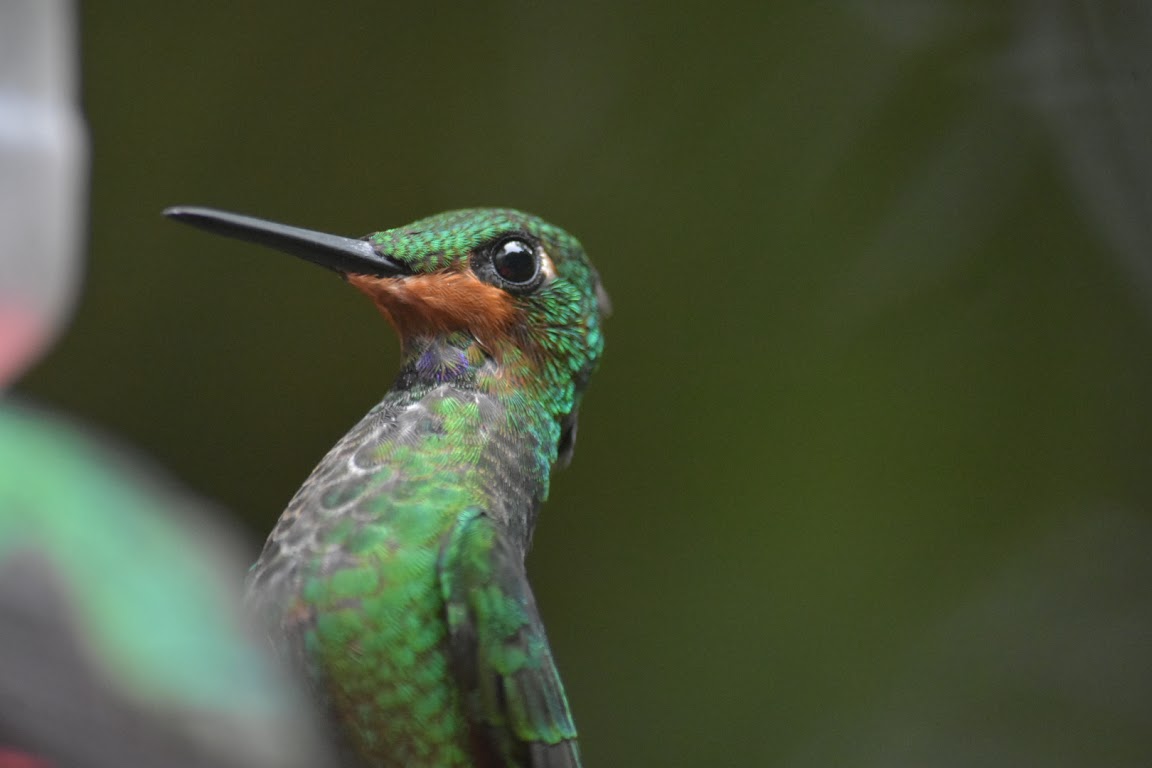Birds of Costa Rica – the Big 5 and where to see them
Costa Rica is home to a wide variety of birds of all shapes and sizes – read on to see what I mean by shapes! Whether you’re a seasoned enthusiast or looking to get started, here are five iconic birds of Costa Rica to keep an eye out for when visiting this biodiverse country.
Contents
Resplendent Quetzal
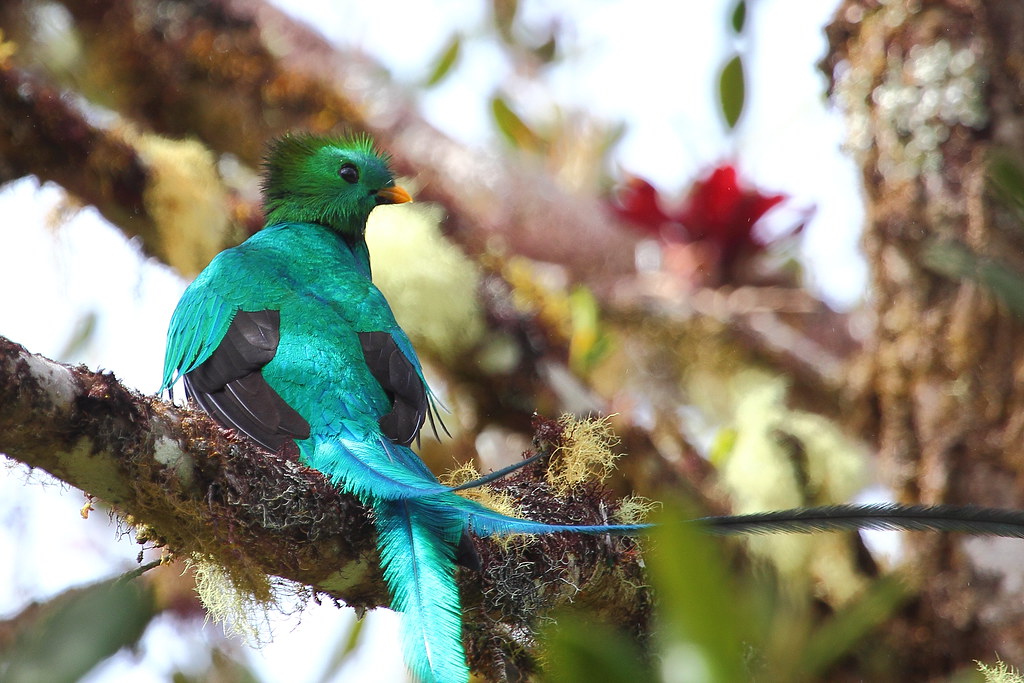

Resplendent by name, and resplendent by nature, the resplendent quetzal is a prime target for birders visiting this country. With its scarlet belly, iridescent green body and tail feathers twice its body length trailing behind, it’s hard to believe a bird this exquisite exists, let alone manages to fly.
It’s not just birders that revere this species: both the Maya and Aztec people considered it sacred, believing it to represent the god of the sun, wind, knowledge, learning and crafts. Quite the multitasker! Additionally, it is the national bird of Guatemala and their currency is named after it.
How to see resplendent quetzal in Costa Rica
The cloud forests of the Monteverde region are the best place to look. The face of the quetzal adorns every tour agency in the tourist town of Santa Elena, with the bird itself inhabiting the surrounding forest reserves. Two that are particularly productive are Curi Cancha and Monteverde Cloud Forest Reserve, with the mating season from February to August being the best time to look. Hiring a guide for this can be worth it – despite their striking appearance, quetzals can sometimes be quite tricky to spot. Furthermore, guides bring high-powered telescopes with them, enabling you to view the bird’s plumage in all its glory. If you prefer to go independently, ask the reserves’ staff when buying entry which particular spots would be best for them.
Scarlet Macaw
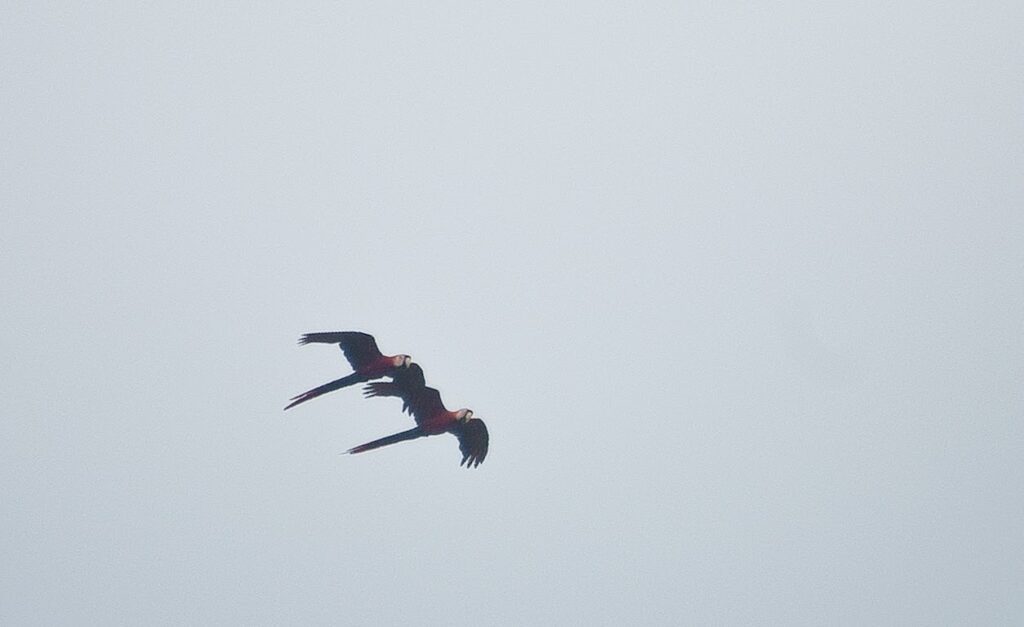

Along the coastlines of Costa Rica, this brightly coloured red bird can often be seen swooping overhead with its long tail trailing behind, its call announcing its presence to everyone down below. Like the quetzal, scarlet macaws feature heavily in Mayan mythology, symbolising the god of light, and they are the national bird of Honduras. Scarlet macaws are social birds, using their squawks that can carry for miles to locate other members of their group. Additionally, since they mate for life, they can generally be seen flying around in pairs.
How to see scarlet macaws in Costa Rica
The scarlet macaw has a limited distribution in Costa Rica, confined to areas near the Nicaraguan border and the southeast, though the latter contains Manuel Antonio and Corcovado National Park, two of Costa Rica’s most popular ecotourism locations. One particularly good spot to see them is Drake Bay since their tendency to fly over the town makes them easy to see, including while having your morning coffee or taking a dip at the local beach. Few things say “pura vida” quite like cooling off in the sea while watching a pair of macaws drifting across the palm trees.
Toucans
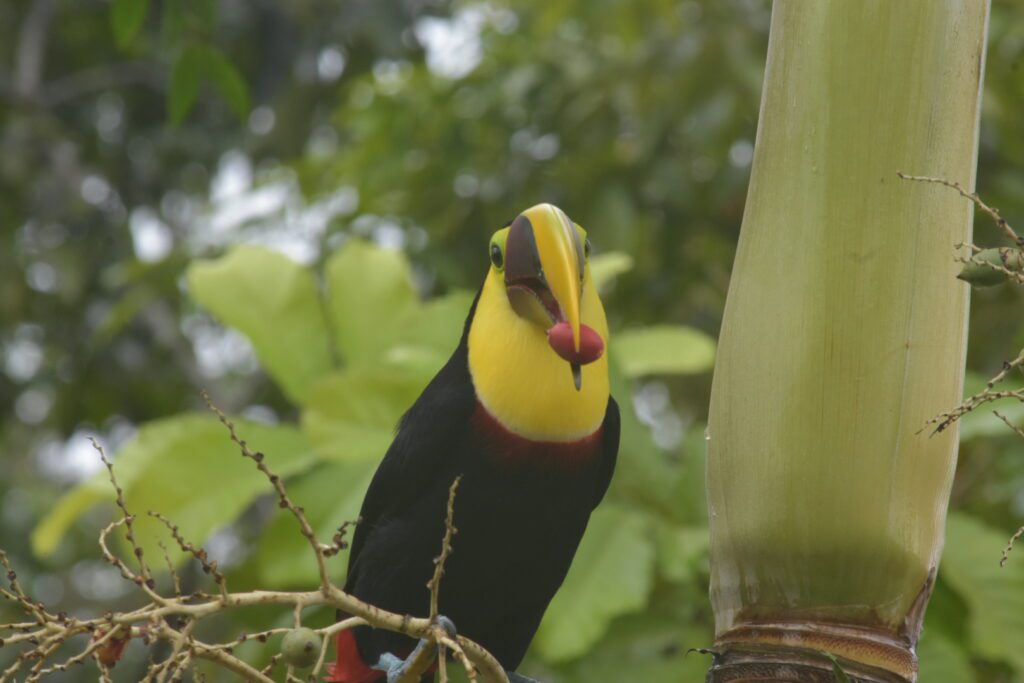

Being sandwiched between the Pacific and the Caribbean, Costa Rica is home to two different species of toucan. The keel-billed toucan, with a green and yellow bill, dominates the Caribbean coast, while the yellow-throated toucan, its bill yellow and dark brown, mainly inhabits the Pacific. In the hills that span the country’s centre, there is a bit of overlap between the two species ranges, so it’s possible to see both in some places. Besides their large, colourful beak, another interesting feature of the keel-billed toucan is its call which sounds remarkably like a frog croaking.
Both species are medium-sized birds and use their large beaks to eat a mix of fruits, insects and other birds’ eggs.
As well as these two toucans, Costa Rica is also home to numerous toucan lookalikes, including the green toucanets and the aracaris.
How to see toucans in Costa Rica
Toucans can be seen all over the country, though if you’d like to see both species the best place to do so is Sendero Bogarin in La Fortuna. Here, the abundant fruit trees and the toucans’ tendency to hang around the entrance meant that I saw some before I’d even bought my entry ticket. Other good places to look include Monteverde and Corcovado National Park, where they can often be found flying around the treetops.
Hummingbirds
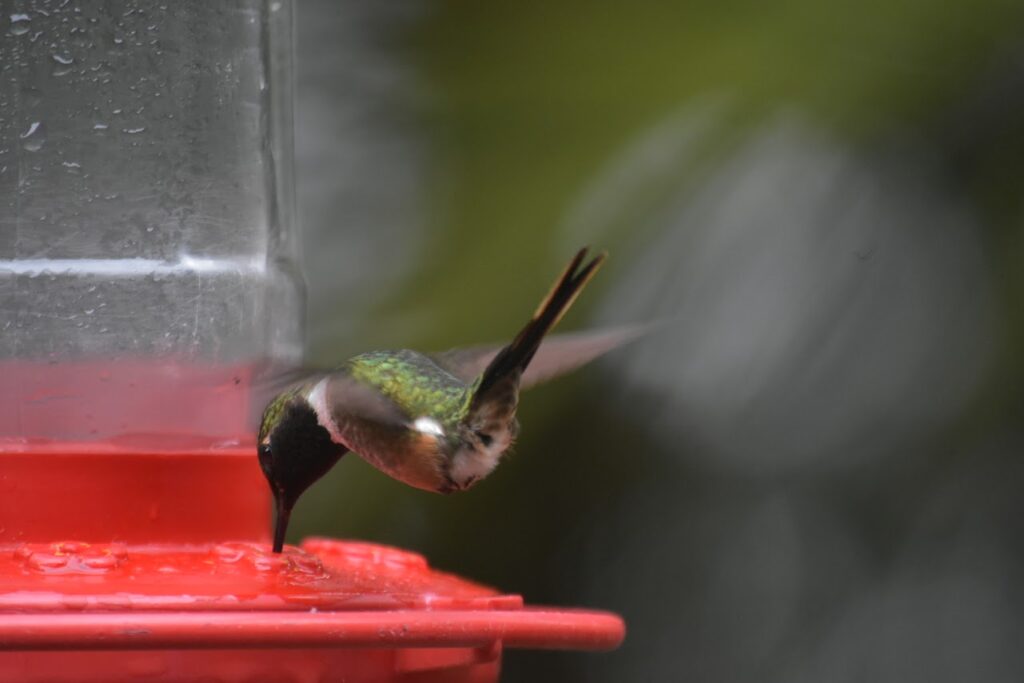

With over 52 species in Costa Rica alone, this country is an excellent place to see these little birds in action. Eccentric doesn’t even begin to describe them, with their hearts pounding at 1200 beats per minute and wings flapping 80 times in that same minute. On a typical day, each hummingbird will visit around 2000 flowers in order to keep its metabolism going. This constant feeding, plus hooks in their feathers that pick up pollen and their wingbeats spreading it around, means scientists have found hummingbirds to be better pollinators than bees in some cases.
How to see hummingbirds in Costa Rica
While hummingbirds can often be seen flitting about the forest, this usually isn’t much more than a brief glimpse. Fortunately, many lodges and reserves have flowerbeds or even dedicated hummingbird feeders filled with nectar where these birds congregate. In Costa Rica, these are so widespread that you’re rarely far away from somewhere with them. Oftentimes they’ll be called something like “observatorio de colibris”, or simply “hummingbird garden”, and if a hotel has them they’ll often use this in their marketing.
Three-Wattled Bellbird
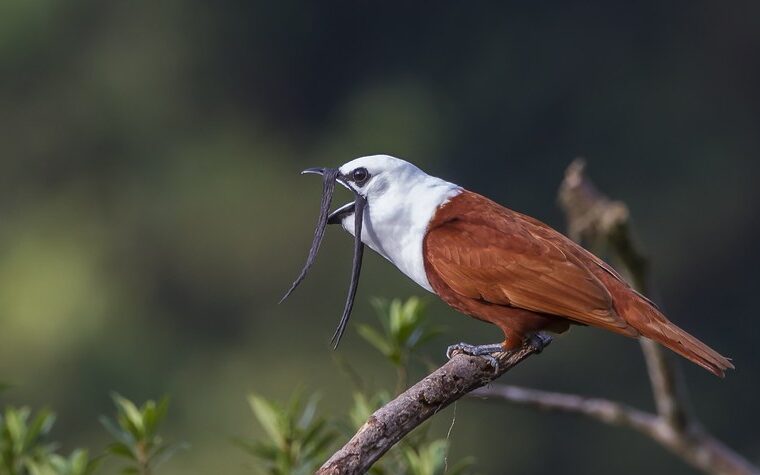

This extraordinary bird is a prime target for birders visiting the cloud forests of Costa Rica. While the female is a nondescript speckled green, the male has a white head and three tentacle-like wattles sprouting from near its beak. Although this striking feature made this species popular among birders, its exact purpose isn’t entirely clear.
How to see three-wattled bellbirds in Costa Rica
Monteverde is the best place to go looking for them, especially Curi Cancha reserve where branches on dead trees often play host to calling males during the mating season. As well as these exposed positions, their loud calls often give them away – a bellbird’s call is at 100 decibels, which for reference is forty decibels more than people laughing.
One important thing to note is that this species is migratory, breeding in the mountains between March and June. Outside these times it moves down to the coast, where it makes itself far less conspicuous.
Photo credits:
“Male Resplendent Quetzal” by ryanacandee is licensed under CC BY 2.0.
“Three-wattled Bellbird” by Jorge Obando Gutierrez is licensed under CC BY-SA 2.0.

